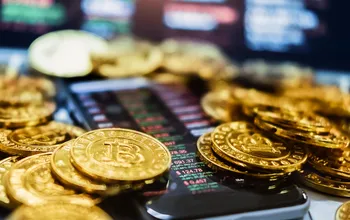-
NEAR Protocol has announced a strategic proposal to reduce its token inflation rate from 5% to 2.5%, aiming to strengthen its ecosystem and enhance token value.
-
The initiative includes a significant reduction in staking rewards, which is expected to shift the dynamics of validator incentives and potentially boost decentralized finance (DeFi) activity on the platform.
-
According to COINOTAG sources, co-founder Illia Polosukhin emphasized that this move will better position NEAR as a store of value, especially in emerging AI-driven markets.
NEAR Protocol proposes halving token inflation to 2.5%, reducing staking rewards and aiming to enhance investor appeal and DeFi competitiveness by 2025.
NEAR Protocol’s Inflation Reduction Proposal: A Strategic Move to Bolster Token Value
NEAR Protocol’s latest governance proposal targets a significant reduction in its annual token inflation rate from 5% to 2.5%, with implementation expected by 2025 pending community approval. This adjustment reflects a broader industry trend where Layer-1 blockchains seek to optimize tokenomics to attract long-term investors and improve network sustainability. By halving inflation, NEAR aims to create scarcity, which could enhance the token’s appeal as a store of value. The proposal also signals a shift away from heavy reliance on staking rewards, which currently stand at approximately 9%, potentially lowering them to 4.5%. This recalibration is designed to balance validator incentives with broader ecosystem health.
Impact on Staking Rewards and Validator Economics
The proposed reduction in staking rewards is a critical component of NEAR’s inflation adjustment. Validators, who secure the network and validate transactions, currently benefit from relatively high yields. Cutting these rewards by half will inevitably affect validator income streams, potentially leading to changes in network participation and staking behavior. However, this move is expected to encourage validators to focus more on operational efficiency and long-term commitment rather than short-term yield maximization. Such a shift could foster a more resilient and sustainable validator ecosystem, aligning incentives with network performance and user engagement.
Potential Benefits for DeFi and Investor Sentiment
Lower inflation and reduced staking rewards may initially raise concerns about liquidity and token circulation. Nonetheless, industry experts, including NEAR co-founder Illia Polosukhin, highlight that these changes could enhance NEAR’s competitiveness in the DeFi space by increasing token scarcity and improving governance token value. This adjustment may attract investors seeking assets with deflationary characteristics, thereby boosting market confidence. Additionally, the proposal aligns with trends observed in other Layer-1 blockchains, such as Ethereum’s EIP-1559, which successfully enhanced token value through structural economic reforms.
Governance and Ecosystem Implications of NEAR’s Tokenomics Shift
The governance process surrounding this proposal underscores NEAR Protocol’s commitment to decentralized decision-making. Community members and stakeholders are invited to participate in the voting process, ensuring that the inflation adjustment reflects collective interests. This participatory approach is crucial for maintaining trust and transparency within the ecosystem. Furthermore, the reduction in inflation and staking rewards is expected to recalibrate the balance between token issuance and network utility, fostering a healthier economic model that supports sustainable growth and innovation.
Comparative Analysis with Other Layer-1 Blockchain Initiatives
NEAR’s inflation reduction proposal mirrors similar strategies employed by other prominent Layer-1 blockchains aiming to enhance token value and ecosystem sustainability. For instance, Ethereum’s EIP-1559 introduced a fee-burning mechanism that effectively reduced circulating supply, contributing to a more deflationary token model. NEAR’s approach, while distinct in mechanism, shares the objective of aligning tokenomics with long-term network health. By reducing inflation and staking rewards, NEAR is positioning itself to compete more effectively in the evolving blockchain landscape, particularly in sectors driven by AI and decentralized finance.
Conclusion
NEAR Protocol’s proposal to halve token inflation and reduce staking rewards represents a calculated effort to strengthen its ecosystem, improve token scarcity, and enhance investor appeal. While the changes may impact validator economics, they are designed to foster a more sustainable and competitive network environment. By engaging its community in governance and drawing on successful precedents from other Layer-1 blockchains, NEAR is taking proactive steps to secure its position in the rapidly evolving crypto market. Stakeholders are encouraged to participate in the upcoming vote to shape the future trajectory of the NEAR ecosystem.



